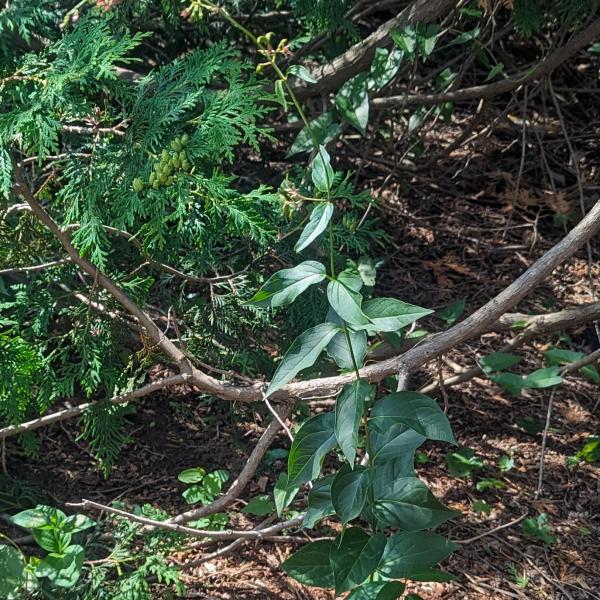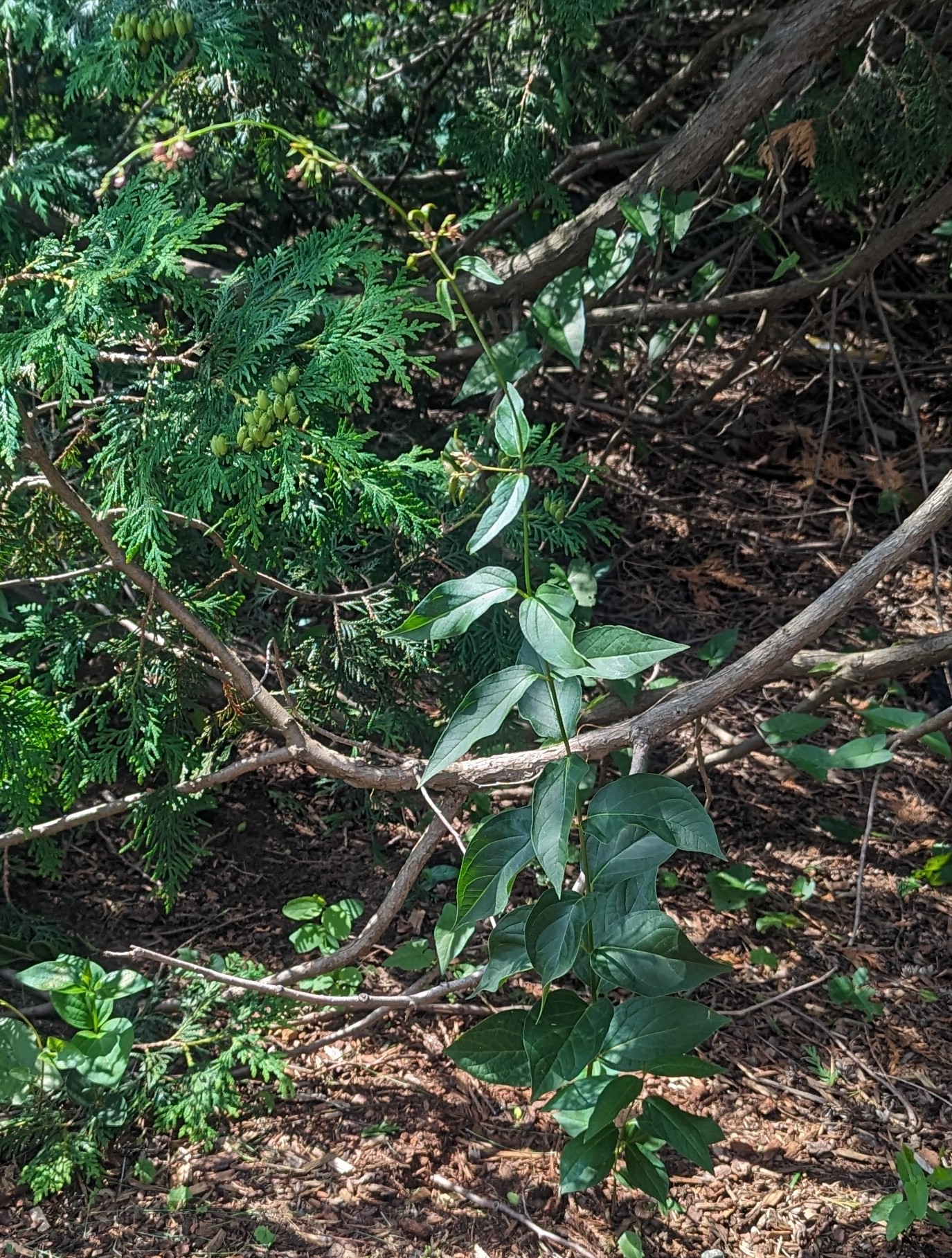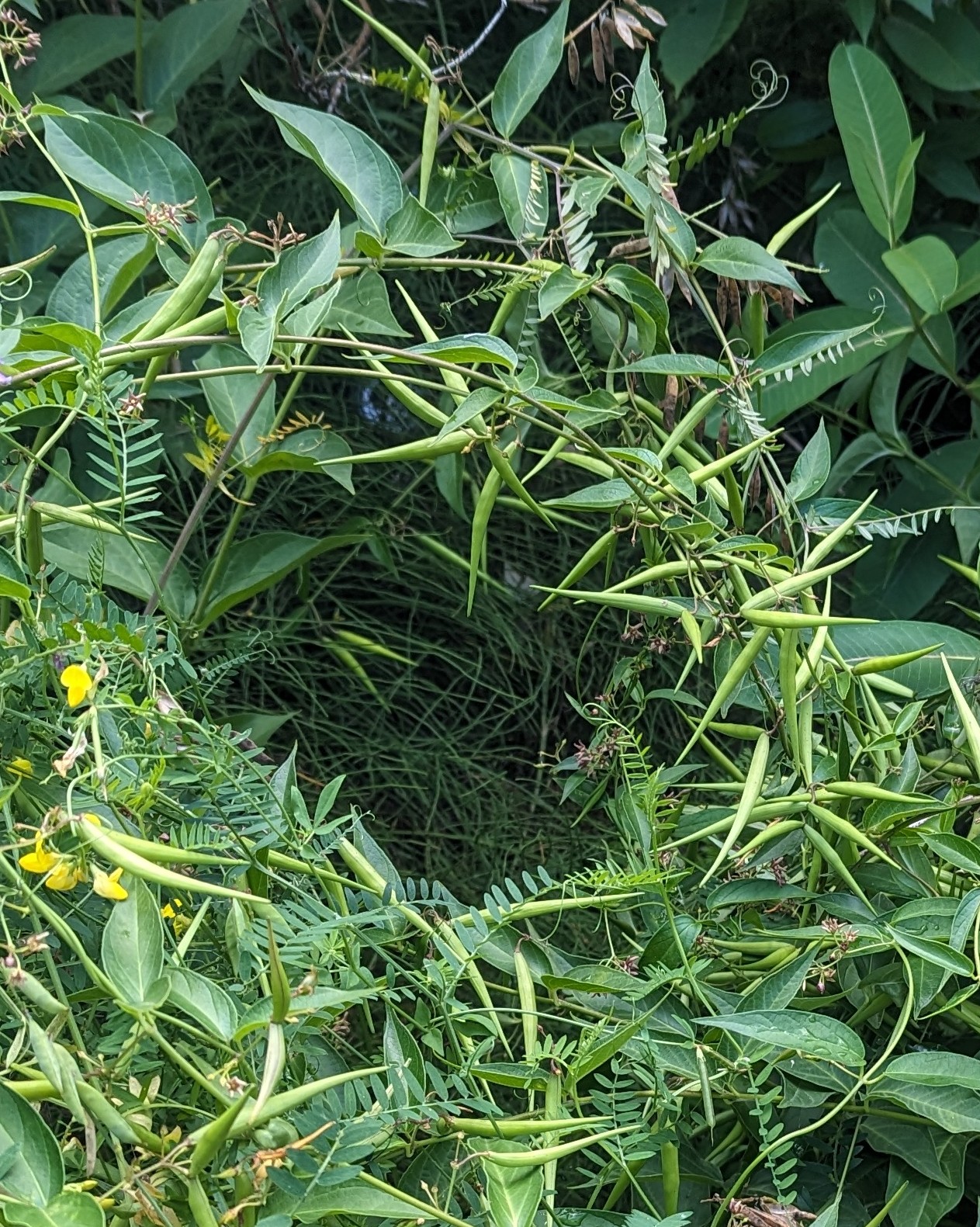
Pale swallowwort (Vincetoxicum rossicum), an invasive plant, was confirmed in Burlington in June 2023. This is the first confirmed population of this species in the Vermont. Basic Identification information can be found on the pale swallowwort page.
Some of the invasive characteristics and potential impacts of swallowwort include:
1. Reproductive characteristics
- Wind-blown seeds disperse rapidly;
- Root crown fragments readily sprout if not destroyed.
2. Plant growth characteristics
- Ability to dominate woodland understory;
- Formation of large dense thickets that outcompete native species, thus changing habitat and decreasing biodiversity;
- Alters microbes in soil, negatively impacting competitive plant growth
3. Ecosystem impacts
- Outcompetes rare native plants;
- Decreases bird biodiversity;
- Decreases insect biodiversity;
- Leaves are fatal to monarch butterfly larvae and may affect monarch reproduction;
- Affects soil microbes;
- Harmful to some mammals, including livestock
- Can cause skin rash in humans.
The Vermont Agency of Agriculture, Food and Markets (AAFM), the Vermont Department of Forests, Parks and Recreation (FPR), and the City of Burlington are working cooperatively on efforts to address this population. Together, the agencies will be managing invasive plants on city-owned right of way, and educating and encouraging local landowners to address the plants on their own properties.
Watch Public Service Announcement from the Vermont Department of Agriculture.


all photos credit: FPR staff